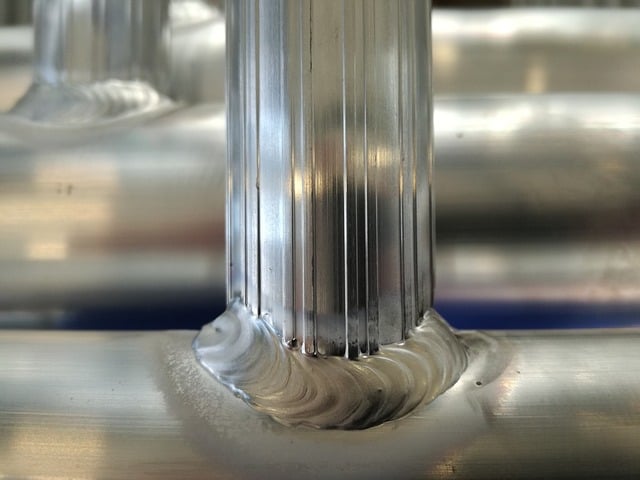Ensure Weld Quality With Non Destructive Testing

Ensuring weld quality is crucial to ensure that materials and structures continue to perform to the required standards.
Visual examination before, during and after the welding process is essential for detecting flaws on the surface of the weld but other non-destructive testing (NDT) methods such as Ultrasonic Testing and X-Ray Fluorescence are indispensable across a diversity of industries to locate and identify internal discontinuities. These NDT technologies are the only ways of determining weld serviceability and ensure the ongoing functionality, safety and performance of plant and processes.
A good NDT programme will recognise the limitations of the different technologies and identify which method is most appropriate for a particular application as well as dictate how they should be used in tandem with one another to ensure the most thorough and accurate quality assessment and weld inspection.
Radiographic and ultrasonic inspection are the two most common NDT methods for detecting defects within the internal structure of a weld, but there are many other complimentary methods such as magnetic particle inspection and eddy current testing.
Ultrasonic testing (UT)
Ultrasonic testing is one of the oldest NDT technologies and weld inspection is its most common industrial application. It detects hidden cracks, voids and other internal discontinuities by directing high-frequency sound waves on a predictable path through the part under test. When the beam is interrupted by a defect or imperfection, the pattern made by the reflected sound enables the technician to determine the condition of the test piece.
There are other NDT methods which are more suitable for determining porosity in welds, but UT is generally the preferred way of detecting conventional defects and lamination.
Eddy Current
Eddy current (EC) testing uses the principle of electromagnetism to inspect conductive materials for cracks, measure material and coating thickness and to do conductivity measurements for the purposes of identifying materials, detecting heat damage and determining case depth. One of the most practical applications of this NDT technology is the inspection of structures that endure cyclical loading which may result in fatigue cracks in critical welded areas. It is also particularly effective for inspecting thin metals, and is used extensively in industries such as aerospace where the safety and quality of metal sheets, tubes and manufactured parts are paramount.
Eddy current inspection is a widely accepted NDT method for rapid and cost-effective scanning of welded structures, raw materials and finished products and the easy-to-use devices will significantly increase the probability of detection whilst improving inspection productivity and documentation.
X-Ray Fluorescence
Hand-held X-Ray Fluorescence (XRF) instruments are a popular choice for inspecting welds. The technology uses short-wavelength, high energy X-ray beams directed onto the test piece for identifying both the qualitative and quantitative composition of the substance (both metals and alloys). When the X-ray beam strikes the substance, it excites the electrons and causes them to move. Because each substance has unique elemental composition, XRF is able to identify the various materials and uncover any defects not visible to the naked eye.
XRF technology is extremely effective in environments where structural integrity relies on welding (such as mining, general manufacturing, consumer and environmental safety etc) and is a highly accurate and reliable way of ensuring confidence in the welds as well as the welding material. It is used to analyse incoming alloys before welding takes place and to verify welds in-situ to ensure safety, quality and functionality.
Testing of welds is a critical aspect of any quality control programme and understanding the benefits and drawbacks of the various NDT technologies will help you make the right choice for your unique application.
If you want to speak to someone who truly understands NDT as well as understands that companies and industries have needs that are in a constant state of flux, then you should meet the experienced team at Nexxis. They will work with you to deliver the best solutions to your projects through true collaboration.
